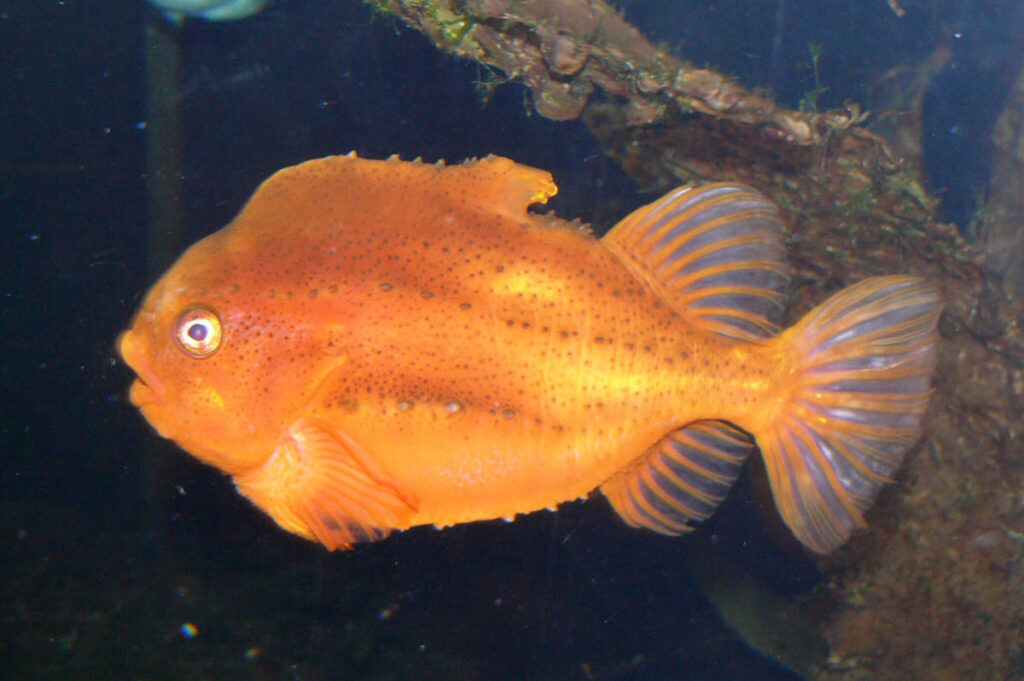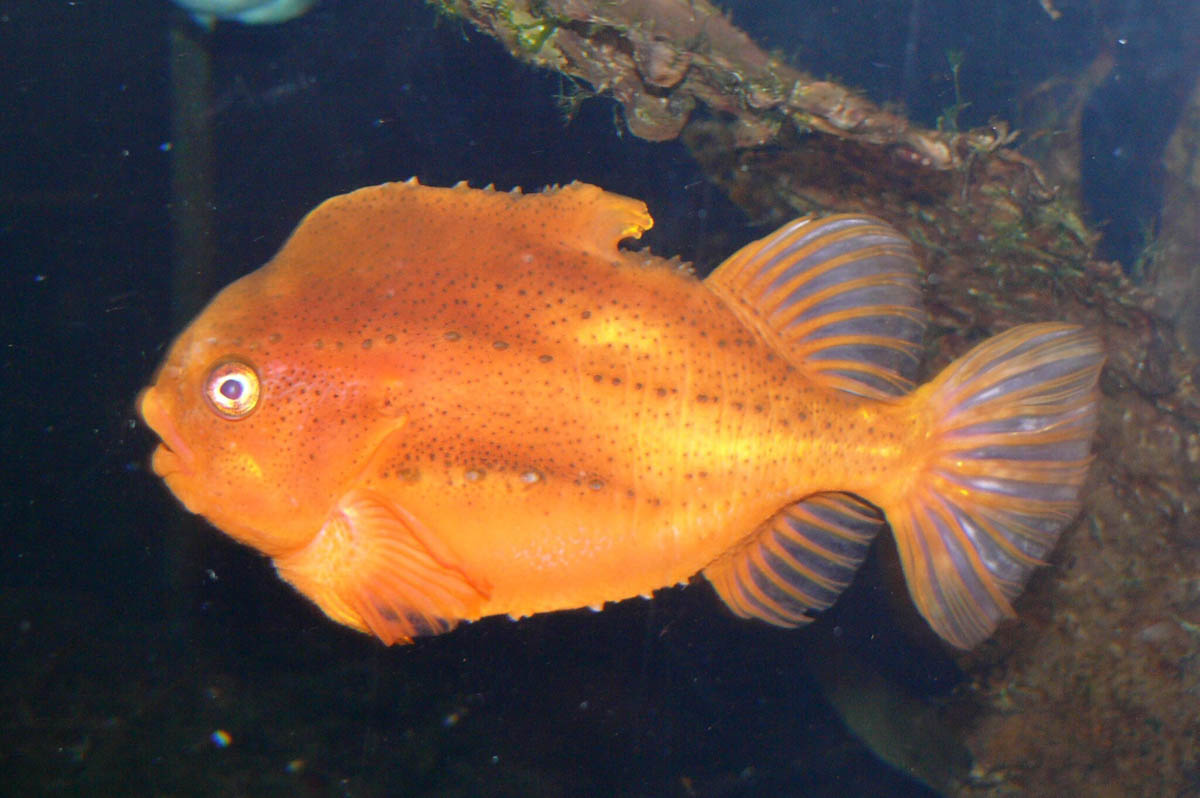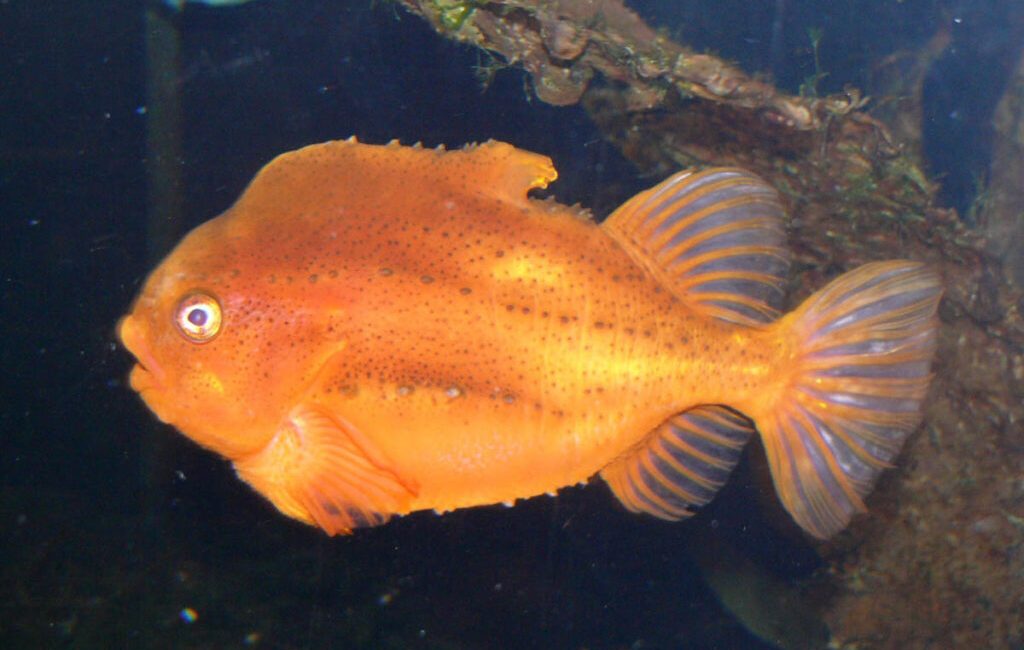
“Meet the Pacific spiny lumpsucker — a ping pong ball with fins! These tiny, round, suction-cup-equipped fish stick to rocks and kelp like pros. Equal parts bizarre, adorable, and hilarious, they’re a diver’s favorite underwater oddball.” Quote from Unchartered Odyssey @ YouTube
Cyclopteridae, commonly referred to as lumpsuckers or lumpfish, are a family of marine fish within the order Scorpaeniformes. These fish inhabit the cold waters of the Arctic, as well as the North Atlantic and North Pacific Oceans, with the highest diversity of species occurring in the North Pacific. The name “Cyclopteridae” is derived from the Greek words kyklos (meaning “circle”) and pteryx (meaning “wing” or “fin”), a reference to the rounded shape of their pectoral fins.
Lumpsuckers get their name from their distinctive body shape and unique ability to stick to surfaces. These fish have round, almost spherical bodies, often with dull colors and stone-like patterns. The term “sucker” comes from their pelvic fins, which have evolved into suction discs located on the underside of their bodies, just behind the pectoral fins. These discs allow the fish to cling to rocks and other surfaces. Many species also feature bony, wart-like bumps on their heads and bodies, which serve as important features for identifying different members of the family.
Their fins are generally small and rounded, except for the large, fan-shaped pectoral fins that extend downward. The first dorsal fin, which contains 4 to 8 spines, may be hidden beneath the skin in some species. Unlike most fish, lumpsuckers have a reduced or missing lateral line along their bodies, but the system is well developed in the head. Some species even have whisker-like extensions from the opercular canal, a part of the head’s sensory system.

These fish have relatively small mouths with rows of tiny, cone-shaped teeth. Notably, they lack a gas bladder. In terms of size, lumpsuckers vary significantly—from the tiny Eumicrotremus awae, which measures only about 2 cm (0.79 in), to the much larger Cyclopterus lumpus, which can grow to over 50 cm (1 ft 8 in).
Lumpsuckers remain relatively understudied, and much about their behavior and biology is still unknown. However, some species have been observed making long migrations to spawn in shallow, intertidal zones—this occurs between December and June in the smooth lumpsucker, and it’s possible that similar patterns exist across other species. During the breeding season, males are known to guard clusters of round eggs, providing some level of parental care.
A notable trait of their nervous system is the absence of Mauthner cells in the hindbrain, a type of neuron typically found in most other teleost fish. Despite lacking these specialized cells, lumpsuckers still exhibit a C-start escape reflex, likely controlled by different neurons in the hindbrain.
Newly hatched lumpsuckers are equipped with functional pectoral fins and suction discs formed from their pelvic fins, which they use to anchor themselves to rocks in shallow waters. Juveniles tend to stay in these warmer, coastal areas as they grow. Known predators of lumpsuckers include Pacific cod and sablefish.
Among the various lumpsucker species, Cyclopterus lumpus is the only one harvested on a commercial scale. Its primary value lies in its roe, (lumpfish caviar) which is sought after in countries such as Canada, Greenland, Iceland, and Norway, with smaller-scale harvesting also occurring in Denmark and Sweden. (cheaper than regular caviar) In addition to roe production, wild C. lumpus are collected to serve as broodstock for the aquaculture sector. In this context, they are used as cleaner fish to help control sea lice infestations in salmon farming operations.
THE SCUBA NEWS Link !
DemirHindiSG
13 Temmuz 2025-17:55




